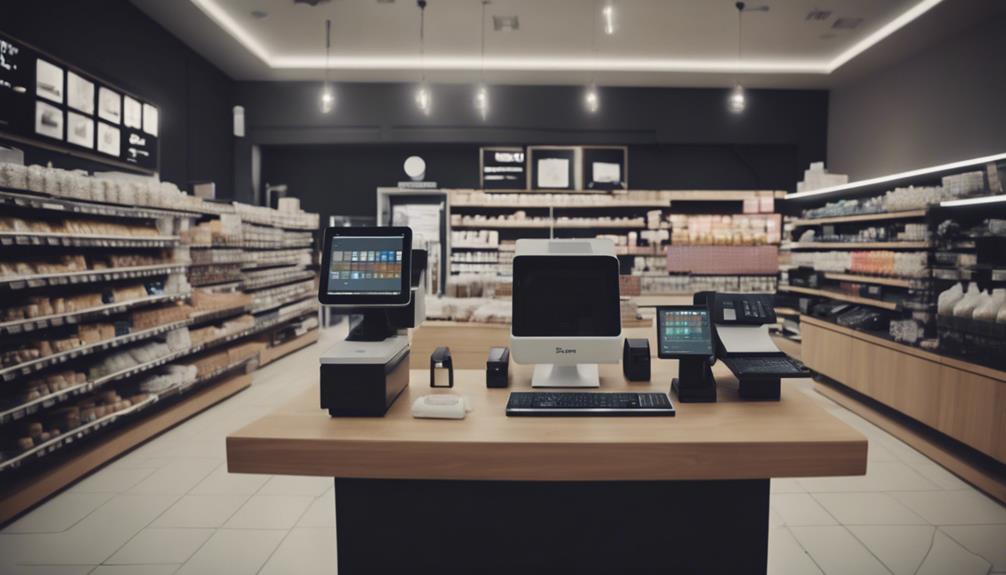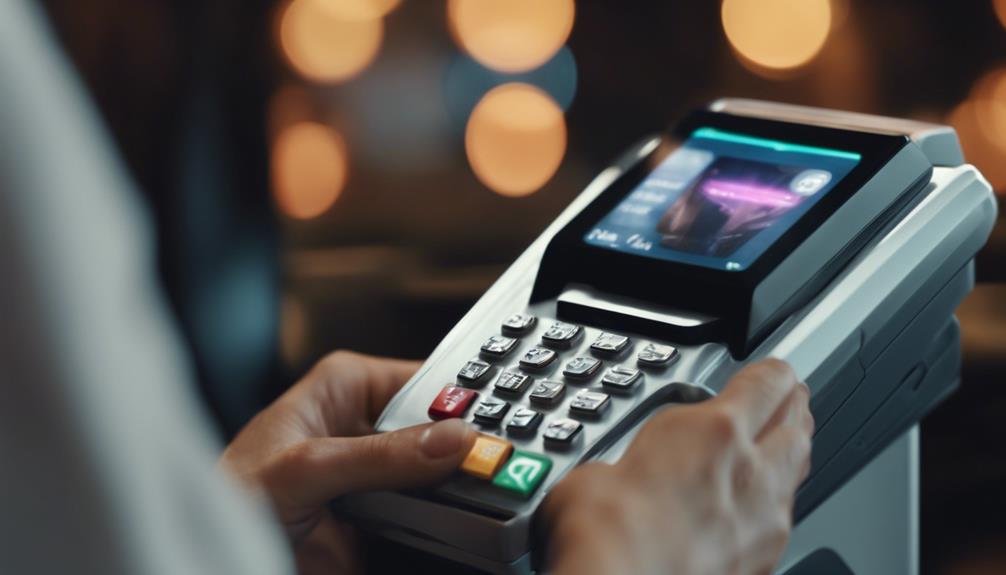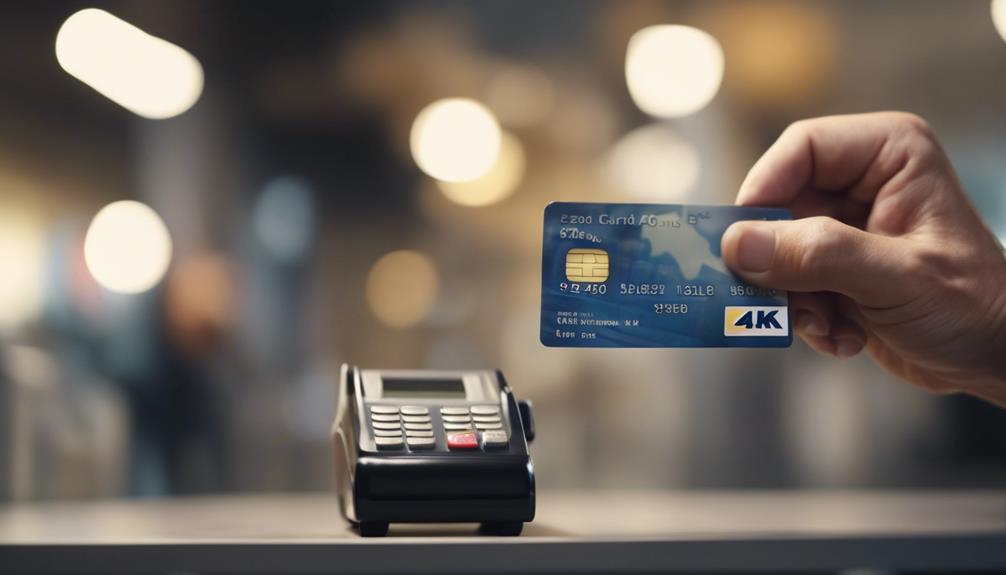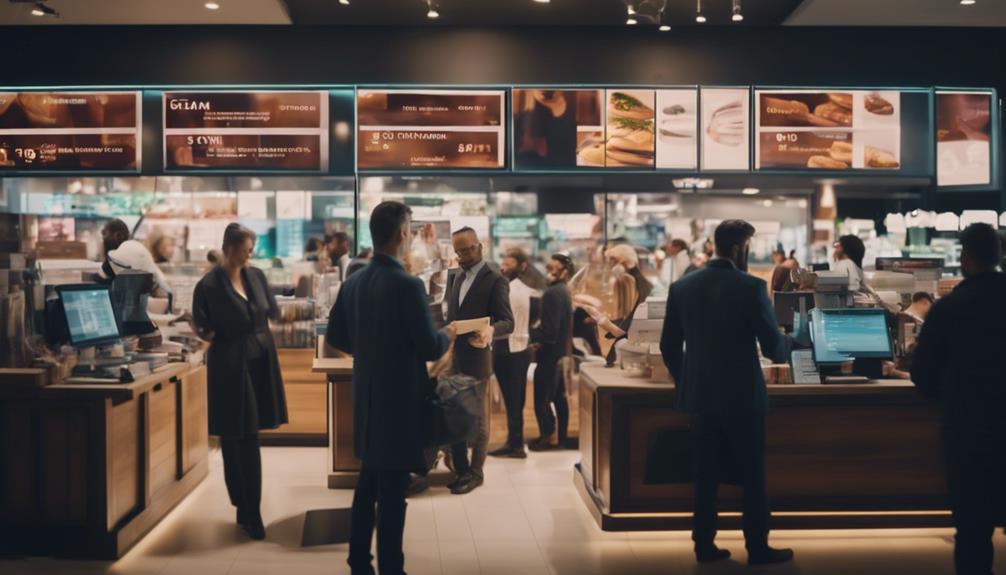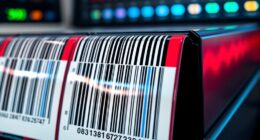When selecting a POS system for your retail business, prioritize robust inventory management, customer profiles, and mobile payment options. Confirm compatibility with hardware like barcode scanners. Take into account staff tracking and flexible pricing models. Assess long-term costs, including hidden fees and training expenses. Centralize control with multi-store management for real-time data access. Utilize sales forecasting for optimized pricing and efficiency. Strive for a seamless omnichannel experience for customers. Look for transparent fees and reliable customer assistance. Align the POS system with your business goals, integrate inventory management, and focus on enhancing customer relationships. Make informed decisions for lasting success in your retail operations.
Key Takeaways
- Evaluate existing system shortcomings for improvement.
- Identify essential POS features like sales reports.
- Plan for future needs and business expansion.
- Consider scalability, costs, and payment methods.
- Assess hardware compatibility and inventory management.
Key Features to Look For
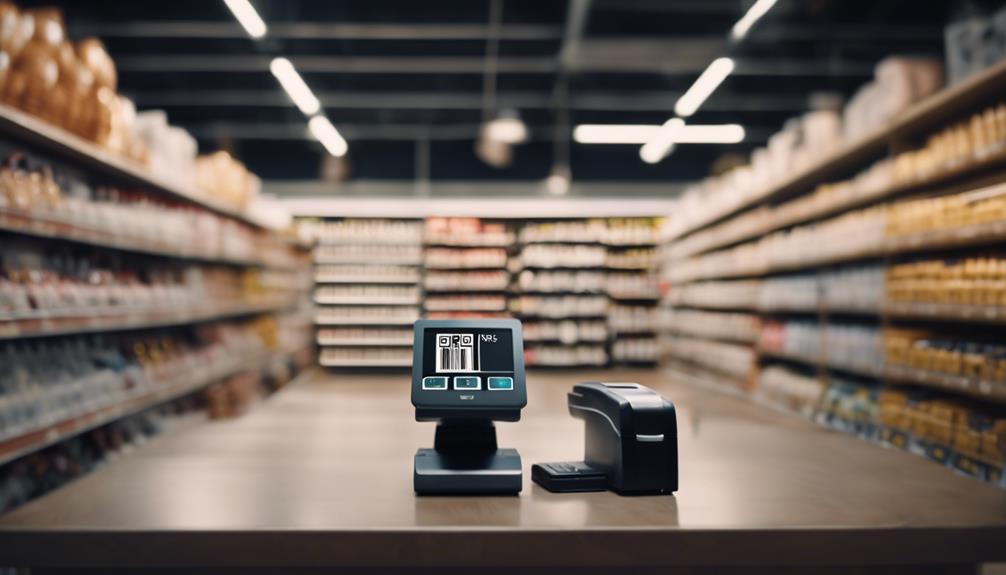
When selecting a POS system for your retail business, prioritize key features that will enhance efficiency and improve customer experience. Look for systems with robust inventory management capabilities to track stock levels accurately and optimize ordering processes.
Customer management tools are essential for creating customer profiles, monitoring purchase history, and implementing loyalty programs to enhance customer relationships. Make sure the POS system you choose has hardware compatibility with devices like barcode scanners and receipt printers to expedite checkout processes and minimize errors.
Incorporating mobile payment options like Google Pay and Apple Pay can cater to customers' preferences and enhance convenience during transactions. Additionally, selecting a POS system with employee management features enables you to track staff performance, manage schedules efficiently, and improve overall productivity.
Considerations Before Making a Choice
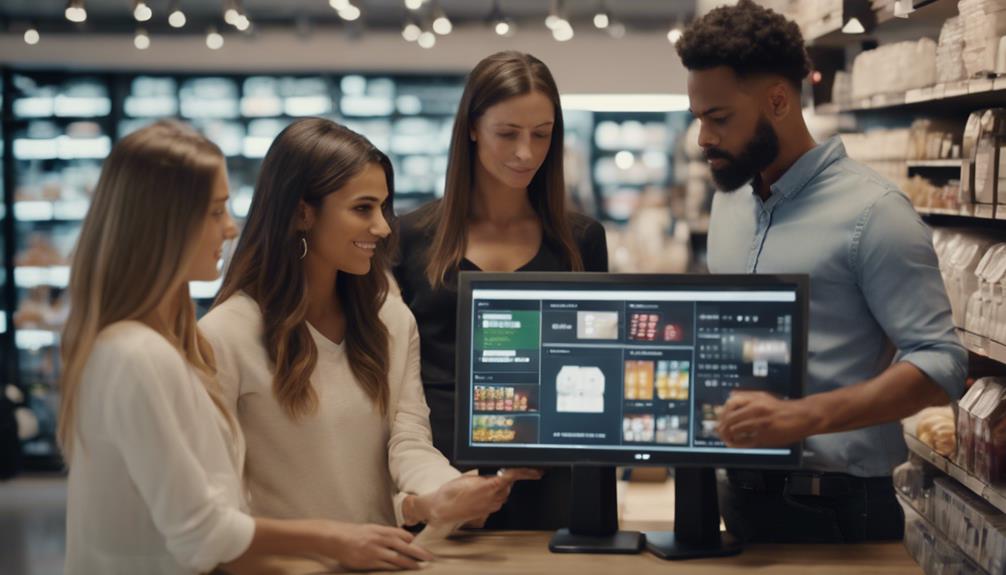
To guarantee a well-informed decision when selecting a POS system for your retail business, carefully consider key factors that align with your specific operational needs and future growth plans.
Assess your existing system's shortcomings and identify the necessary POS features such as sales reports, loyalty programs, multi-store support, and compatibility with current hardware and software setups. Discuss requirements with your team to secure seamless integration.
Plan for future needs like evolving loyalty programs and business expansion. Evaluate payment options, payment methods, and how well the POS system can streamline tasks, boost sales, and enhance overall retail operations.
When making your choice, take into consideration POS system costs and how it aligns with your projected business growth. By contemplating these aspects, you can select a POS system that not only meets your current requirements but also supports your future endeavors effectively.
Evaluating Long-Term Costs
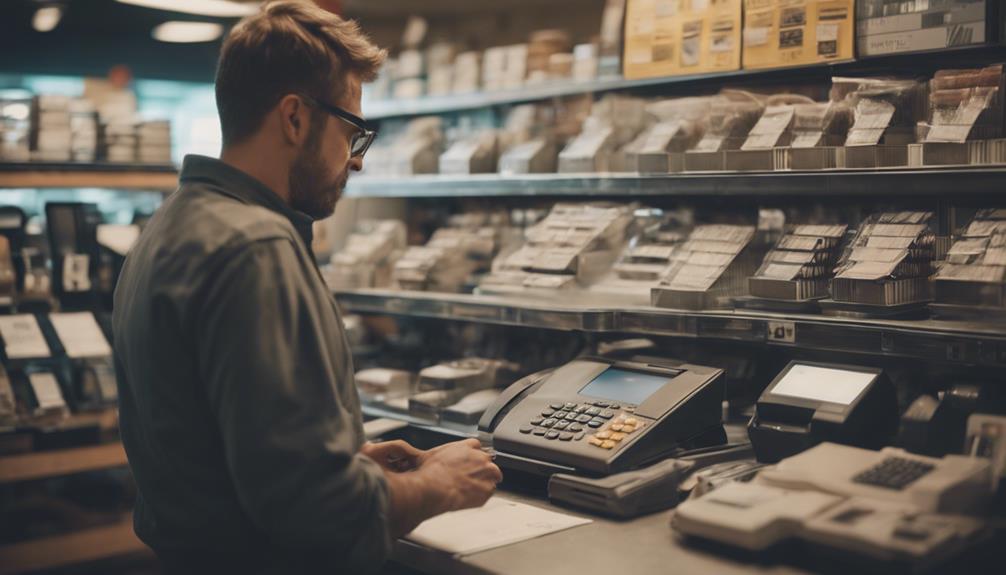
Taking into account hidden costs like software updates and maintenance that accumulate over time is crucial when evaluating the long-term expenses of a POS system for your retail business. In addition to the initial investment, consider the cost of hardware upgrades to guarantee compatibility in the long run.
Factor in training expenses for your staff to efficiently operate the POS system over time. Assess any potential additional fees for customer support or technical assistance beyond the initial setup.
Look for scalable pricing models that can adapt to your business growth without significant cost increases. By carefully evaluating these long-term costs, you can make a more informed decision when selecting a POS system that aligns with your business needs and budget.
Remember that the total cost of ownership includes not only the upfront expenses but also the ongoing costs associated with maintaining and upgrading your POS system to support your retail operations effectively.
Importance of Multi-Store Management

Effective multi-store management in a POS system provides centralized control and real-time monitoring of multiple retail locations. This capability offers significant benefits for your retail chain, including:
- Centralized Control: With multi-store management, you can oversee all your stores from one platform, ensuring consistency in operations and branding.
- Real-Time Visibility: Instant access to inventory levels and sales performance across stores allows you to make data-driven decisions promptly.
- Enhanced Decision-Making: By having a thorough view of all stores, you can make informed choices regarding resource allocation and strategic planning.
- Maximizing Retail Chain Profits: Analyzing consolidated reports helps in identifying trends, optimizing stock levels, and ultimately increasing profits for your entire retail chain.
Sales Forecasting Tools and Benefits

Sales forecasting tools are essential for predicting future sales and making data-driven decisions.
By analyzing sales patterns, you can optimize pricing strategies and promotional campaigns.
These tools enhance efficiency by improving inventory management and reducing excess stock, leading to better financial planning and overall business success.
Forecast Accuracy Importance
Improving forecast accuracy through sales forecasting tools can greatly enhance your retail business's operational efficiency and profitability. By utilizing these tools effectively, you can optimize your inventory levels and reduce instances of stockouts, ensuring that you always have the right products in stock when customers need them.
These tools analyze various factors such as past sales data, market trends, and seasonality to provide you with more accurate predictions for future sales. With reliable sales forecasts, you can make informed decisions on promotions, staffing, and inventory management, ultimately leading to better overall performance and customer satisfaction.
Prioritizing forecast accuracy is essential for maximizing profits, cutting down costs, and meeting customer demand effectively.
Data-driven Decision Making
Utilize data-driven decision making tools in your retail business to enhance forecasting accuracy and optimize operational efficiency. Sales forecasting tools integrated into POS systems analyze historical data to predict future sales trends and customer behavior. By leveraging these tools, retailers can make informed decisions regarding inventory management, staffing, and marketing strategies. Anticipating demand, optimizing stock levels, and reducing excess inventory are key benefits of utilizing sales forecasting tools. This enables businesses to adapt swiftly to market changes, maximize profits, and minimize stockouts. Implementing these tools can lead to improved efficiency, increased revenue, and enhanced customer satisfaction in retail operations.
| Sales Forecasting Tools Benefits |
|---|
| Informed Decision Making |
| Demand Anticipation |
| Stock Optimization |
| Adaptation to Market Changes |
| Increased Revenue |
Seamless Omnichannel Experience
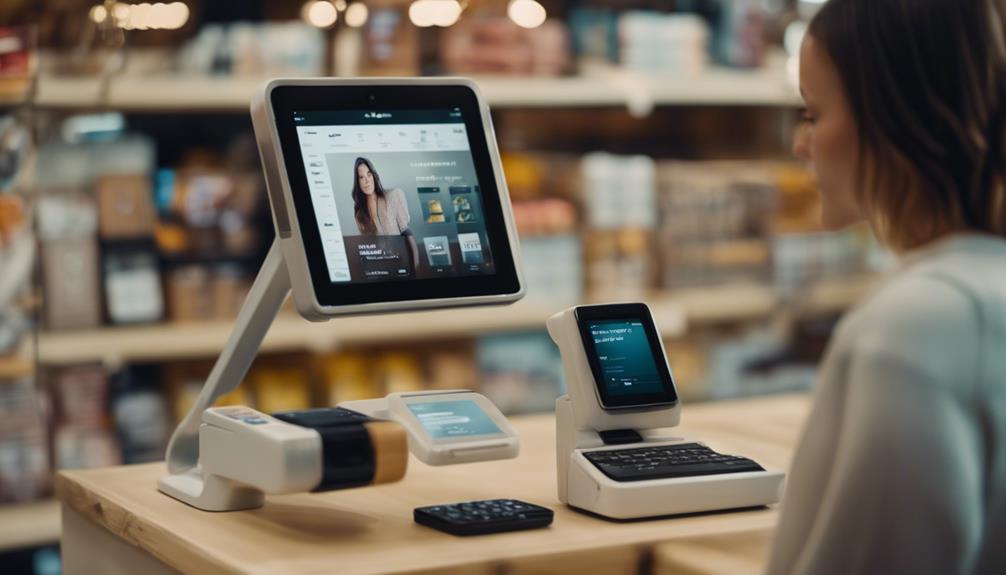
To create a truly seamless shopping experience for your customers, consider implementing an omnichannel POS system that integrates online, mobile, and in-store channels effortlessly. This approach allows customers to move between channels without disruptions, providing them with a consistent experience.
Here are some key benefits of a seamless omnichannel experience:
- Enhanced Customer Retention: Omnichannel retailers achieve a 91% higher year-over-year customer retention rate compared to single-channel retailers.
- Increased Lifetime Value: A seamless omnichannel experience leads to a 30% higher lifetime value for customers, ultimately driving increased revenue.
- Consistent Experience: 68% of consumers expect a consistent experience across all channels when interacting with a retailer, emphasizing the importance of maintaining uniformity.
- Omnichannel Capabilities: By having omnichannel capabilities, you can cater to the 73% of shoppers who use multiple channels during their shopping journey, ensuring an integrated experience that meets their needs effectively.
Hidden Fees and Ongoing Support
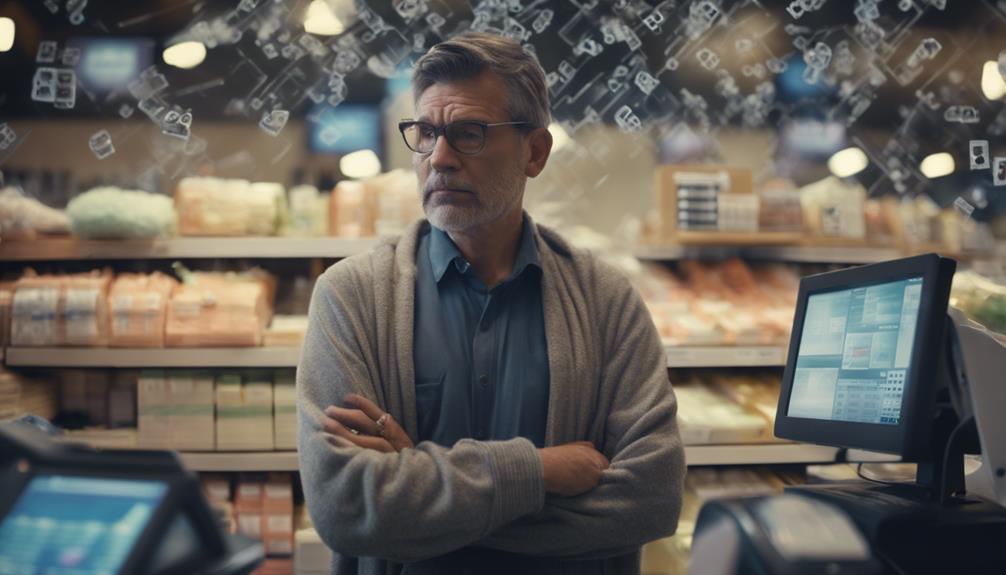
When considering a POS system for your retail business, it's important to be aware of hidden fees that may impact your budget. These fees can range from monthly software licensing costs to transaction fees and add-on feature charges.
Additionally, reliable ongoing support is essential for troubleshooting and ensuring smooth system operation.
Fee Transparency Importance
Understanding the importance of fee transparency, especially concerning hidden fees and the level of ongoing support, is crucial when selecting a POS system for your retail business. Here are some key points to keep in mind:
- Hidden Fees Impact: Additional charges for software updates, integrations, or customer support can greatly impact your overall costs.
- Importance of Ongoing Support: Seamless POS operation relies on prompt issue resolution and updates, minimizing disruptions in your business.
- Transparent Fee Structures: Effective budgeting is enabled through a clear understanding of all costs involved in implementing and maintaining your POS system.
- Bundled Pricing: Some POS providers offer bundled pricing that simplifies cost management by including ongoing support and updates.
Reliable Customer Assistance
For a seamless experience with your POS system, prioritize dependable customer assistance that includes addressing hidden fees and providing ongoing support. Hidden fees can greatly impact your overall costs, so make sure the POS system offers transparent pricing to avoid surprises.
Ongoing customer support is vital for resolving issues efficiently; look for providers with 24/7 support for timely resolution of technical issues. Evaluate the quality of customer assistance by checking reviews to gauge the level of dependable support.
Choosing a vendor that offers excellent customer support can save you time and money in the long run by ensuring smooth operations and prompt resolution of any issues that may arise.
Aligning With Business Goals
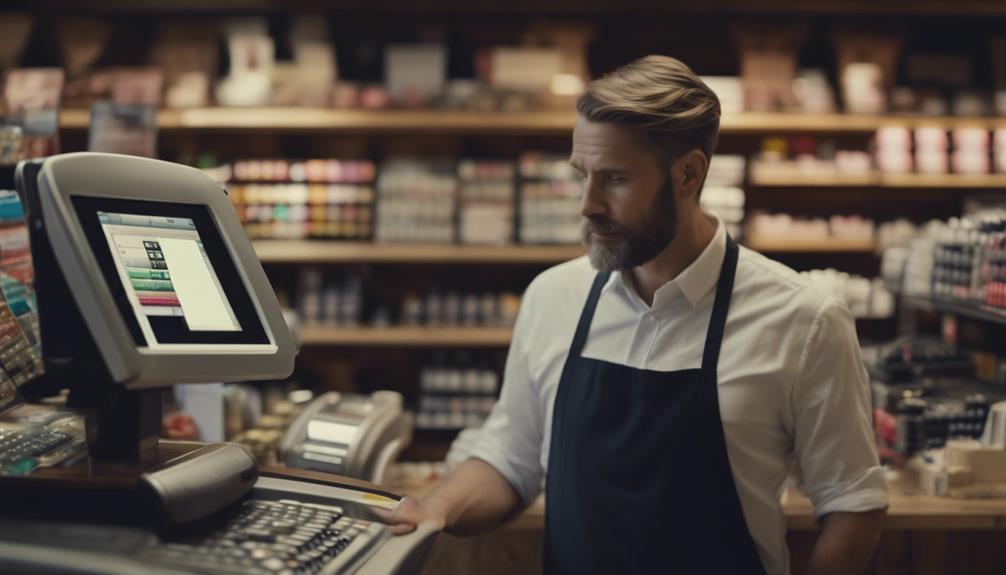
Align your POS system with your business goals to drive efficiency and growth. To guarantee your POS system is aligned with your business objectives, consider the following:
- Evaluate Your Business Goals:
Before selecting a POS system, clearly outline your business goals and identify the key areas where a POS system can help you achieve them.
- Match Features with Needs:
Look for POS systems that offer features tailored to your specific business requirements. This alignment will streamline operations and boost productivity.
- Enhance Customer Experiences:
Choose a POS system that aligns with your goal of providing exceptional customer experiences. This can lead to increased sales and customer loyalty.
- Customize for Objectives:
Customize your POS system to meet your unique business objectives. This customization can enhance data insights, aid decision-making, and support your long-term growth strategies.
Integration of Inventory Management
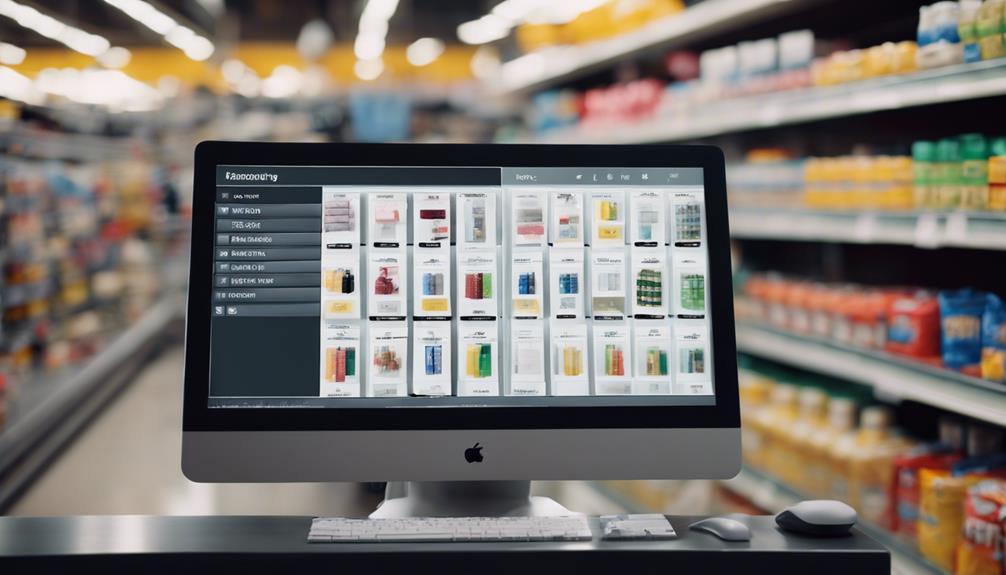
When considering a POS system for your retail business, the integration of inventory management provides significant benefits. Real-time stock tracking guarantees you always know your current inventory levels instantly.
Automated reorder alerts and seamless product syncing streamline operations and help optimize your ordering process.
Real-Time Stock Tracking
By seamlessly integrating inventory management into your POS system, you can effectively track stock levels in real-time, optimizing your retail business operations. Real-time stock tracking offers several benefits for your business:
- Accurate Inventory Levels: POS systems with real-time stock tracking guarantee you always know the exact quantity of each product in stock.
- Data-Driven Decisions: Make informed decisions on purchasing, restocking, and pricing strategies based on real-time inventory data.
- Operational Efficiency: Prevent stockouts and overstocking, streamlining your business processes and saving costs.
- Enhanced Customer Satisfaction: Ensure products are available when customers need them, leading to higher satisfaction levels and repeat business.
Automated Reorder Alerts
Integrating automated reorder alerts into your POS system enhances inventory management efficiency and minimizes stockouts for your retail business. By receiving notifications when inventory levels are low, you can prevent running out of popular items during a sale. Customized reorder alerts tailored to your sales patterns and lead times guarantee ideal stock levels, streamlining the restocking process. This automation reduces manual tasks, decreases human error, and improves overall inventory accuracy. With automated reorder alerts, you can consistently have products in stock, meeting customer demands and boosting satisfaction. Take a look at the table below to understand the benefits of automated reorder alerts in your retail business.
| Benefits of Automated Reorder Alerts |
|---|
| Minimize stockouts |
| Streamline restocking process |
| Improve inventory accuracy |
Seamless Product Syncing
Enhance your retail business's operational efficiency by seamlessly syncing products across all sales channels for real-time inventory updates. By integrating inventory management into your POS system, you can guarantee accurate stock counts and prevent issues like overselling or stockouts, ultimately boosting customer satisfaction. Here are four key benefits of seamless product syncing:
- Real-time Updates: Stay informed about stock levels instantly.
- Improved Order Fulfillment: Optimize processes for timely deliveries.
- Accurate Stock Counts: Prevent errors and discrepancies in inventory.
- Enhanced Retail Performance: Streamline operations and boost overall efficiency.
Integrating inventory management through POS systems not only saves time but also enhances your business's performance and customer service.
Enhancing Customer Relationships
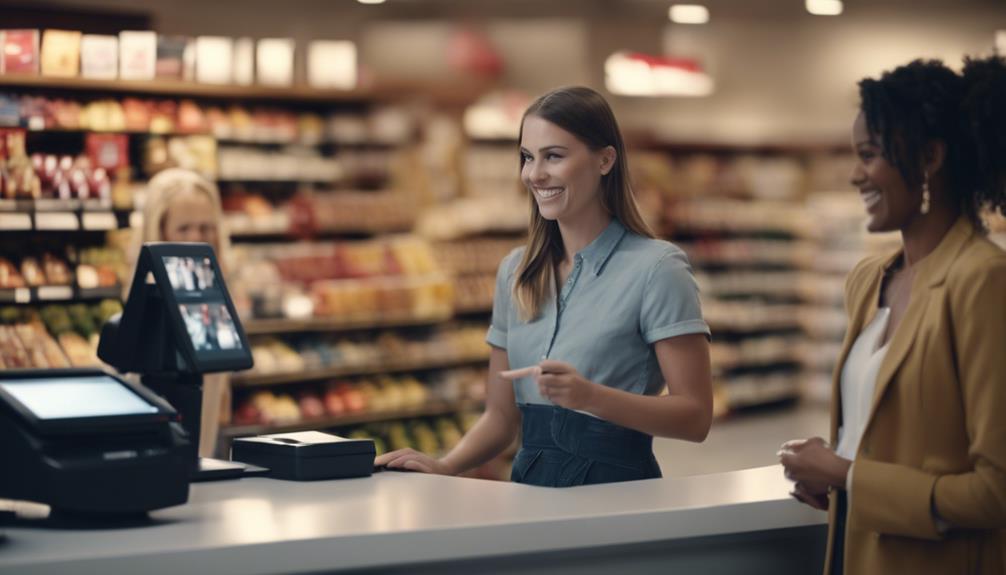
Enhancing your customer relationships through advanced POS systems can greatly boost your retail business's success. By utilizing customer relationship management features, you can engage in personalized interactions, leading to higher customer retention rates. Loyalty programs integrated into POS systems drive repeat business and encourage customer engagement, fostering a sense of loyalty among your clientele. Access to customer purchase history and preferences enables targeted marketing campaigns and promotions, increasing the effectiveness of your marketing efforts. Additionally, POS systems with built-in customer feedback tools allow you to gather valuable insights to enhance your products and services based on customer input, ultimately improving customer satisfaction. By leveraging these features, you can create a more seamless shopping experience for your customers, solidifying their loyalty to your brand.
| Key Features | Impact on Customer Relationships |
|---|---|
| Customer Relationship Management | Personalized Interactions and Higher Retention Rates |
| Loyalty Programs | Drive Repeat Business and Encourage Engagement |
| Targeted Marketing Campaigns | Increase Marketing Effectiveness with Customer Insights |
| Customer Feedback Tools | Enhance Products and Services based on Customer Input |
| Customer Preferences | Tailor Offerings to Meet Customer Needs |
Frequently Asked Questions
How Would You Decide Which Is the Best POS System?
To decide on the best POS system for your retail business, consider scalability for growth, integration ease with existing tools, PCI compliance for secure transactions, quality customer support, and overall costs including hardware, software, and operational expenses.
Evaluating these factors will help you make an informed decision that aligns with your business needs and goals. Prioritize features that will enhance efficiency, security, and flexibility to support your operations effectively.
What Is the Best POS System for Retail?
When considering the best POS system for retail, it's important to assess your business needs.
Lightspeed offers a range of features for omnichannel retailers.
SumUp is user-friendly but may lack scalability.
eHopper provides flexible pricing.
PayPal Zettle has low transaction fees for mobile businesses.
Tailor your choice based on features, pricing, and hardware compatibility to find the best solution for your retail store.
How Do I Choose a POS for a Small Business?
When selecting a POS system for your small business, consider factors like size, essential features, scalability, user-friendliness, and affordability. Make sure it aligns with your current needs and can grow with your business.
Look for inventory management, sales reporting, and easy setup. Opt for a system with flexible payment options and pricing plans that suit your budget.
Prioritize user-friendly interfaces for smooth operations. Make an informed decision that supports your small business goals.
How to Pick a Pos?
When selecting a POS system, prioritize your business's unique needs and growth potential. Guarantee seamless integration with existing tools for efficiency.
Evaluate ease of use, hardware requirements, software capabilities, and costs. Opt for a PCI-compliant system with secure payment processing and reliable support.
Make an informed decision by considering scalability and future requirements. Your choice impacts daily operations and customer experience, so choose wisely for long-term success.
Conclusion
To wrap up, when choosing a POS system for your retail business, it's vital to carefully consider key features, long-term costs, and compatibility with your business goals. Additionally, you’ll want to explore whether the POS system offers easy integration with your existing software and hardware. Many retailers are now opting for cloudbased POS systems because they offer flexibility, scalability, and the ability to access real-time data from anywhere with an internet connection. This can be particularly advantageous for businesses with multiple locations or those looking to expand in the future.
Keep in mind, 'you can't judge a book by its cover' – explore thoroughly into the details to make sure the system meets your needs.
By prioritizing multi-store management, sales forecasting, and inventory integration, you can enhance customer relationships and streamline operations for long-term success.
Choose wisely to drive efficiency and profitability in your retail business.

